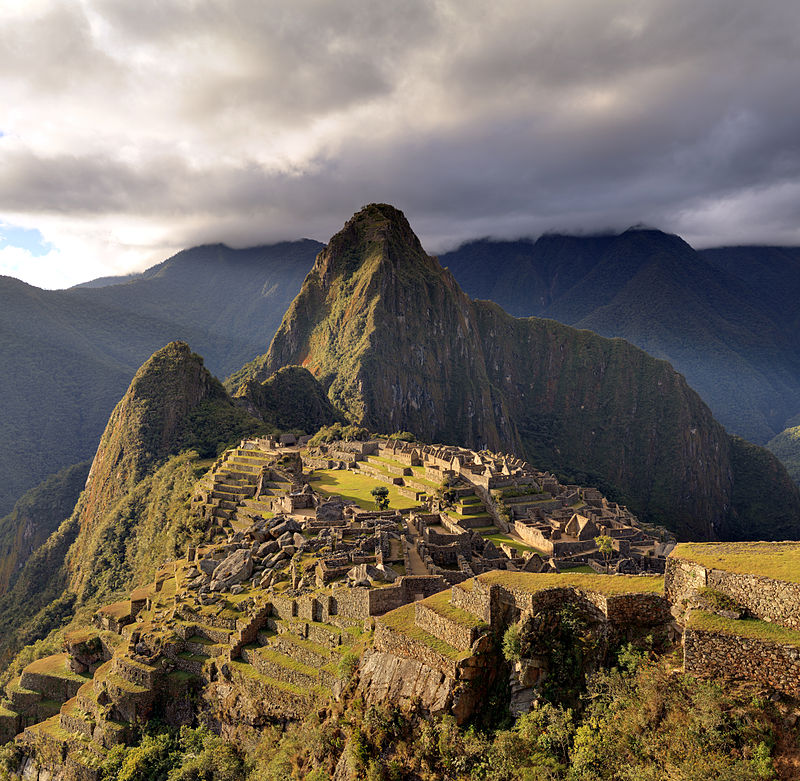



Peru is located along the pacific coast of South America. The neighbors are Brazil, Bolivia, Ecuador, Columbia and Chile. Pacific Ocean is in the western part of Peru. It has three physical divisions. The pacific coastal region Andes mountain region and the Amazon plains. The pacific coastal region is narrow and is in the western part of Peru. The Andes mountain region runs from south to north and located in the middle of the country. The Amazon wooded plains is in the eastern part. Peru has an area of 1285216 sq .km. Lima is the capital of Peru. The country is administered by dividing the territory into 25 regions. The population of Peru is 30.9 million as per 2014 report. Peru is a democratic country. It has a presidential form of government. Peru and adjoining areas of South America has very old civilizations dated back to 9000 B C. Older Civilizations like Paracas, Nazca, Wari, Chimu and Mochican grew in the Peru and the adjoining region. These civilizations were famous for irrigation system, urban planning, and building construction, metal works ceramics and potteries. Incas grew and emerged in the 15th century as a powerful state. The capital of Incas was Cusco. The famous emperor of Incas was Pachacuti. In 1532, the last Mohican ruler Atahualpa was defeated by the Spanish general Francisco Pizarro in the battle of Cajamarca. The Spanish rule started from that period. Lima became the capital of Peru. By 1571 the whole of Incas Empire was under the control of Spanish victory.
Present day Peru has people from South America, Africa, Europe and Asia. Migration of people continued up to the independence of Peru. Peru became independent from the Spanish rule on 28th July, 1821. The main language spoken then is Spanish. Other languages spoken are Quechua and Aymara. The major religion of Peru is Christianity. There are Catholic, Protestant, Orthodox and evangelists among the people. Local traditional beliefs are also followed by some people. The government at the national level and the regional level are elected by the people. The congress is the house of representatives of people. The age group of 18-70 the president is directly elected by the citizens. The Prime Minister is the leader of congress. Peru has 25 regions. These are Amazonagh, Ancach, Apurimac, Arequipa, Ayachecho, Cajamara, Callao, Cuzco, Huancavellica, Huanuco, Ica, Junin, Laliberted, Lambayeque, Lima, Loreto, Madre de dios, Moquegua, Pasco, Plura, Puno, Sanmartin, Tacna, Tumbes and Ucayali. Each region has their own elected governments. The capital city lama is governed by the Lima city council. Important cities of Peru contributed for the growth development and economic progress of the people. These cities are Lima Arequipa, Trujillo, Chimbote and Huancayo. The geography of Peru is characterized by the central Andes mountain region the western pacific coastal region and the eastern Amazon wooded plains. Andes mountain ranges run parallel to the pacific coast from south to north. The sierra highland is developed by weathering and erosion of Andes Mountain. The Altiplano Plateau has been formed in the same way. The highest mountain Huascarán is 6768m in height and found in this region. The Andes Mountains were formed between the Mesozoic & Tertiary period. Due to collision of the south American plate and pacific plate, the sediment were folded and slowly the Andes mountain ranges formed alloy the western coast of south America. A number of sedimentary beds were formed along the foothill regions of Andes mountain chain.
The pacific coast is warm and arid in nature. The Andes high lands have temperate to cold climate. Some of its peaks are covered with snow. The eastern lowlands have equatorial climate. The rain fall in the highlands is frequent in summer. The peaks are frozen and get snowfall in the winter months. The eastern plain gets heavy rainfall in the rainy season. In the summer season the temperature is found to be high. The winter is found to be colder in the southern part of Peru. Occasional rainfall is seen in winter months. Peru has biodiversity with more than 21000 species of plants. Around 5855 plant species are endemic to this region. Due to snowfall and heavy rain fall a number of rivers and stream are formed from the ranges of Andes some of these rivers became large river systems. These are Ucayali, Maranor, Putumayo, Yavari, Napo, Huallaga, ,Urubamba, Mantaro, Apurimac, Altiplano, Mayo, Solimoess, Chira, Umbes, Pongo, Postazo, Canas, Health, Naney, Aguarico, Zarumilla, Desaguaadero, Wtucubamba, Perena, Chilon, Chinehipe, Purus, Jurua, Rimac, Javary, Madrededios, Ene, Mantaro and Tambo.
The economy of Peru is strong and vibrant in nature. Peru is a major exporter of minerals, metals, textiles, fish and meat. The economy of Peru was liberalized from 1990. There is increase in the direct foreign investment in mining and manufacturing sectors. Services sector contribute 53% and mining contributes 15% to the national income. The manufacturing contributes about 23% to the national income. Agriculture and forestry contributes 9% to the national income. The major trade partners of Peru are USA, China, Brazil and Chile. Mining and extraction of metals are major activities in Peru. The mining of silver, copper, Zinc and gold was there prior to the arrival of Spanish merchants in Peru. There was expansion of mining activities after 15th century. Large deposits of gold, silver, zinc, lead, tin, cooper, tantalum, molybdenum, bismuth and iron ore are found in highlands and foothills of Peru. Deposits of coal, petroleum, natural gas, limestone, phosphate brine and gypsum are found here. Industries like mineral concentration smelting, steel fabrication petroleum refining, petrochemicals liquefaction of natural gas, fish and meat processing, cement, glass fertilizer, garments, food processing, beer, soft drinks, rubber, machinery, electrical, chemicals, timber furniture and ceramics are active in Peru.